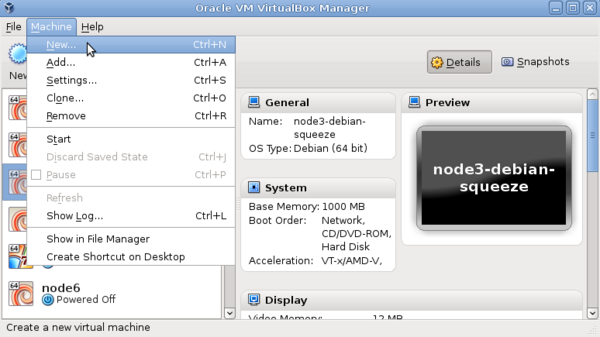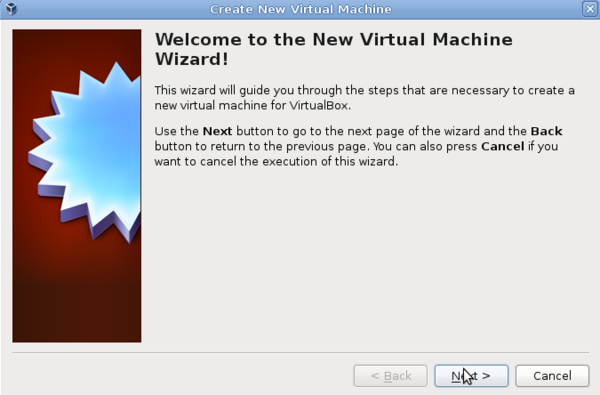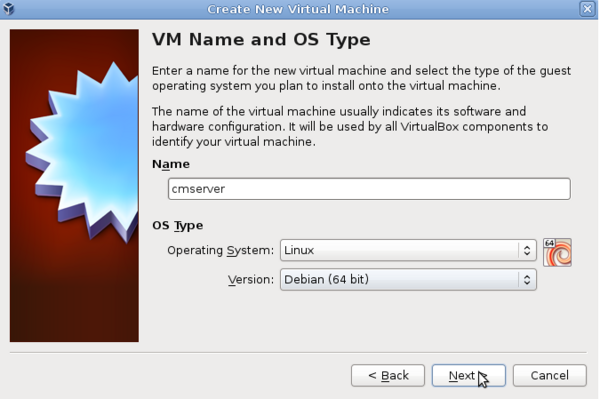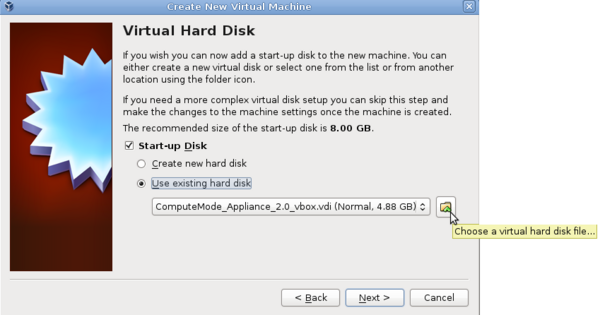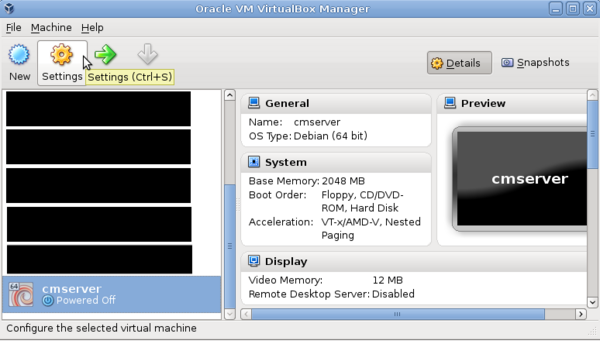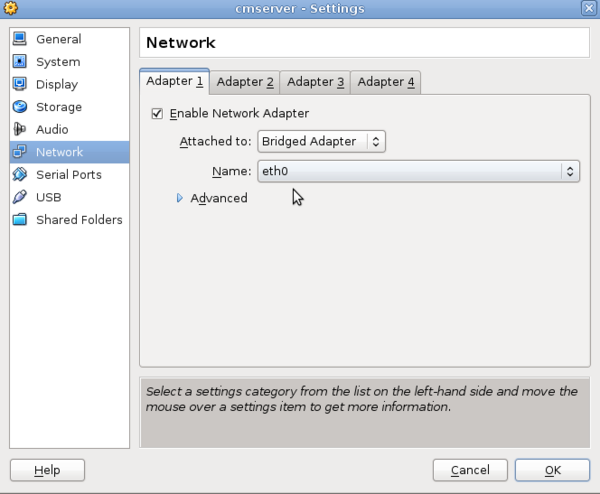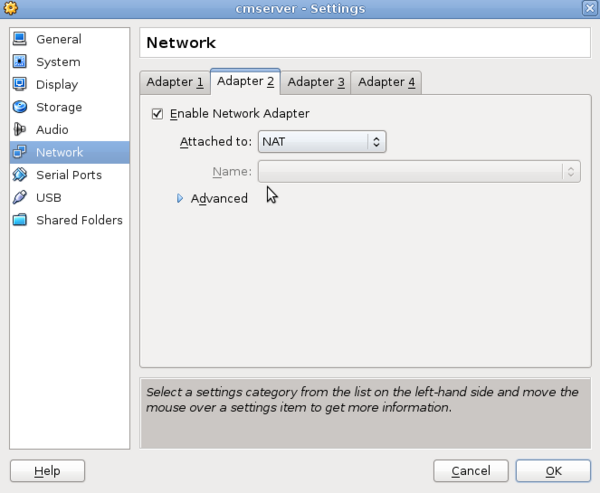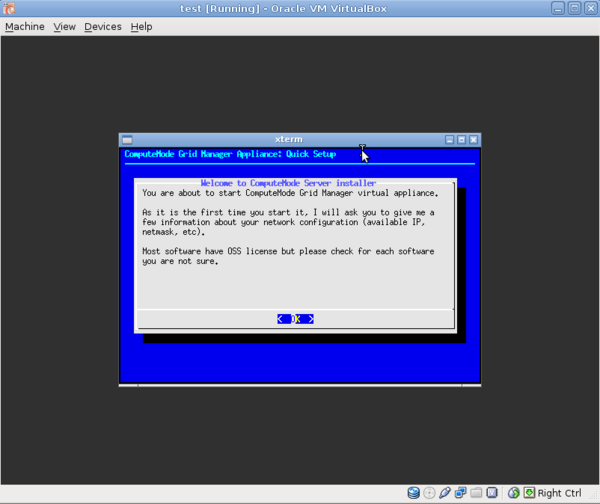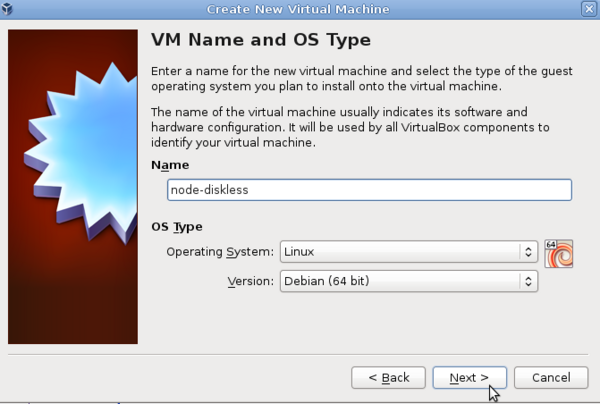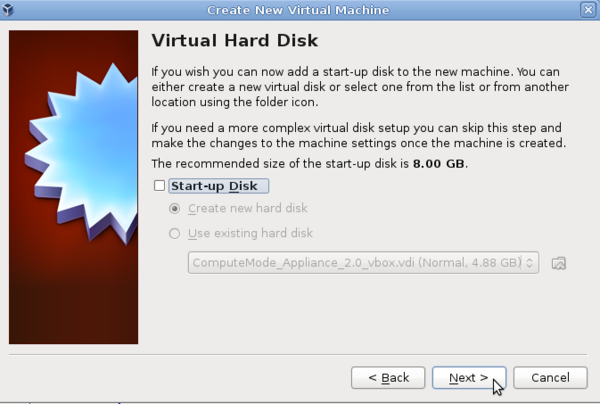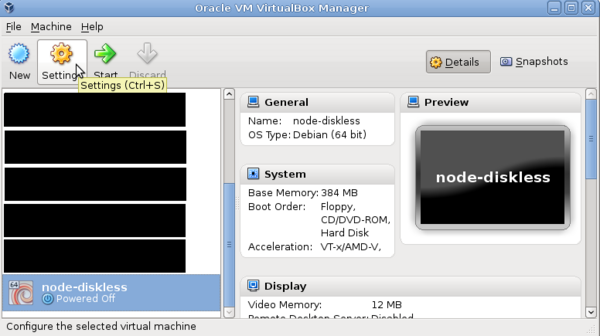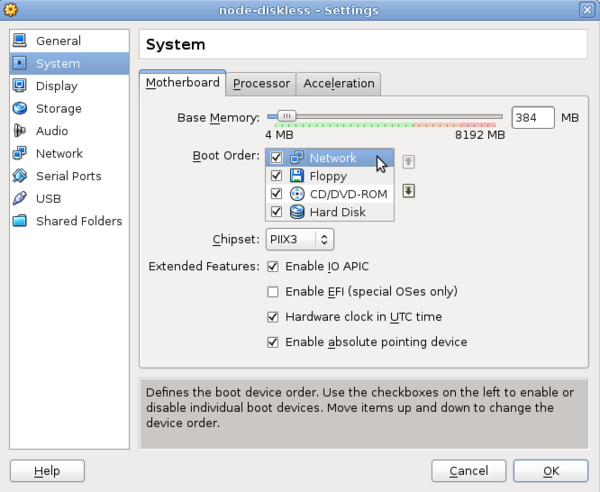ComputeMode server appliance
| Line 1: | Line 1: | ||
[[Category:User doc]] |
[[Category:User doc]] |
||
[[Category:Status Draft]] |
[[Category:Status Draft]] |
||
| − | [[Category:Version 2.0.6]] |
+ | [[Category:Version 2.0.7]] |
| Line 57: | Line 57: | ||
=== Configuration of your new CMserver appliance for VirtualBox === |
=== Configuration of your new CMserver appliance for VirtualBox === |
||
| − | ==== Installation of the CMserver appliance for VirtualBox === |
+ | ==== Installation of the CMserver appliance for VirtualBox ==== |
Revision as of 15:36, 16 January 2012
Contents |
Retrieving virtual appliances
- To retrieve the appliance for the Virtualbox system:
wget http://computemode.imag.fr/files/appliances/ComputeMode_Appliance_2.0_vbox_64bits.zip
or:
wget http://computemode.imag.fr/files/appliances/ComputeMode_Appliance_2.0_vbox_32bits.zip
for VMware:
wget http://computemode.imag.fr/files/appliances/ComputeMode_Appliance_2.0_vmware_64bits.zip
or:
wget http://computemode.imag.fr/files/appliances/ComputeMode_Appliance_2.0_vmware_32bits.zip
for KVM:
wget http://computemode.imag.fr/files/appliances/ComputeMode_Appliance_2.0_kvm_64bits.zip
or:
wget http://computemode.imag.fr/files/appliances/ComputeMode_Appliance_2.0_kvm_32bits.zip
- Then, unzip the appliance:
For Virtualbox:
unzip ComputeMode_Appliance_2.0_vbox_64bits.zip
or:
unzip ComputeMode_Appliance_2.0_vbox_32bits.zip
For VMware:
unzip ComputeMode_Appliance_2.0_vmware_64bits.zip
or:
unzip ComputeMode_Appliance_2.0_vmware_32bits.zip
For KVM:
unzip ComputeMode_Appliance_2.0_kvm_64bits.zip
or:
unzip ComputeMode_Appliance_2.0_kvm_32bits.zip
Configuration of your new CMserver appliance for VirtualBox
Installation of the CMserver appliance for VirtualBox
- Create and configure a new virtual machine with virtualbox:
- A new appliance is now available, you now have to configure the network:
You may define two interfaces: the first interface bridged with your local interface eth0 for example, to access to your server through a ssh connection:
The second, with a NAT configuration, to allow the cmserver to access to the outside (to upgrade packages for example):
Finally you have to configure your local network. The eth0 (the bridged) interface have to access to the CMserver network, this is an example of how to configure the /etc/nerwork/interfaces file:
Finishing the installation: configuration of the cmserver for VirtualBox
- You just have to start your appliance and log-in with the following credentials (be carrefull with the US default keyboard map)
login: root password: icatis
- Once logged, a script is executed the first time the appliance is booted to configure: timezone, keyboard map...:
- To finish the installation, just edit the /etc/nerwork/interfaces file from the cmserver and configure your two new interfaces like following:
# The bridged interface:
auto eth0
iface eth0 inet static
address 172.28.255.253
netmask 255.255.0.0
# The NATed interface:
auto eth1
iface eth1 inet dhcp
- Just reboot the cmserver to complete your installation
How to create nodes on VirtualBox to test the appliance
- You can quickly create a diskless node for the computemode cluster:
- and then configure the network of this node:
Configure the first interface bridged with your local eth0 interface:
And to finish configure the boot order of your node to set the network boot in first:
Configuration of your new CMserver appliance for KVM
Installation of the CMserver appliance for KVM
You currently have two ways to run a CMserver under KVM. You can use the basics KVM/QEMU softwares or use the libvirt with virt-manager.
To run a CMserver appliance under KVM/QEMU:
- Installation of the KVM/QEMU software under a Debian Squeeze:
sudo apt-get install qemu-kvm libvirt-bin
- Configuration of your user permissions:
adduser <youruser> kvm
- Run the following kvm command:
kvm -m 1024 --boot c -vga std -net nic /PATH/TO/THE/FILE/ComputeMode_Appliance_2.0_kvm.qcow2
Some explanations:
-m the memory size used for the virtual appliaces, here 1GB --boot the boot order ot the virtual appliance, here the local hard disk -vga the configuration of your graphical driver -net the definition of your network card
If you want to access to your
How to test the computemode server
If you want to run some tests on your computemode server, you can follow this link: http://computemode.imag.fr/mediawiki/index.php/HowTo_test_cmserver
